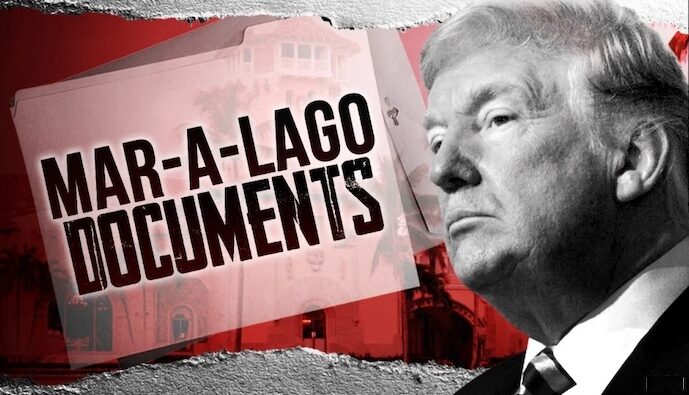
© MGN/Patrick Kelley/US Coast Guard/Google MapsFormer US President Donald Trump
A federal judge in Florida has
released a heavily redacted copy of the affidavit used to justify the Aug. 8 FBI raid on former President Donald Trump's winter home in Florida. In the
fragmentary affidavit — the judge let the Justice Department black out whatever it liked — we learn a little more about how many documents the FBI found and some of the classified markings on them. We learned that the National Archives and Records Administration found
boxes filled with "newspapers, magazines, printed news articles, photos, miscellaneous print-outs, notes, presidential correspondence, person and post-presidential records, and 'a lot of classified records,'" which sounds about right, given our knowledge of the level or organization in Trumpworld. But we still don't know the answer to the most important question of the whole Mar-a-Lago affair:
What are the documents about?There's no need to repeat yesterday's newsletter, titled, "The gaping hole in our knowledge of the Trump documents."
But think about the story this way:Trump had many fights over classified documents when he was in the White House. He wanted to declassify some documents, and the FBI did not. The reason Trump wanted to declassify documents was
he believed the FBI and other agencies had unfairly targeted him in the Trump-Russia investigation of 2016-2019. Trump believed there were
documents that showed evidence of FBI misconduct in its pursuit of Trump.
But those documents were classified. Trump wanted them brought to light. The FBI did not. It warned that
declassifying such documents would compromise carefully guarded sources and methods of U.S. intelligence and damage American national security.
In one specific case, known as the Nunes memo, Trump turned out to be right. Declassified documents revealed that the FBI had improperly used the Steele dossier, which was the collection of false and outrageous allegations against Trump created by a former British spy in the pay of the Hillary Clinton campaign, to win a secret wiretapping warrant against Carter Page, a low-level former Trump campaign aide. Declassification of the documents helped the public understand what the FBI had done to target the Trump campaign.
As it turned out, there was
no damage to national security,
no compromise of carefully guarded sources and methods. But it was no surprise that the FBI fought the public release of documents that
revealed FBI misconduct.By the way, when the Nunes memo was released, paper copies showed that
it had been classified at what is known as the "TOP SECRET/NOFORN" level. That means nearly the highest level of secrecy, combined with a prohibition on showing the documents to any foreign nationals.
Today, the Justice Department said of the
documents given by Trump to the National Archives in January that it found "184 unique documents bearing classification markings, including 67 documents marked as CONFIDENTIAL, 92 documents marked as SECRET, and 25 documents marked as TOP SECRET." In addition, several documents were also marked NOFORN, as well as other markings.
Well, the Nunes memo was TOP SECRET/NOFORN, and
the only thing its publication damaged was the reputation of the FBI. That is not to say that the Mar-a-Lago documents, or some of the documents, might have some serious national security content and implications. In the end, though, remember: We do not know what is in the documents. But we do know Trump, specifically his interests and obsessions. When it comes to classified information,
Trump is probably still interested in the information he was interested in as president — material relating to the Trump-Russia investigation.
Comment: See also: